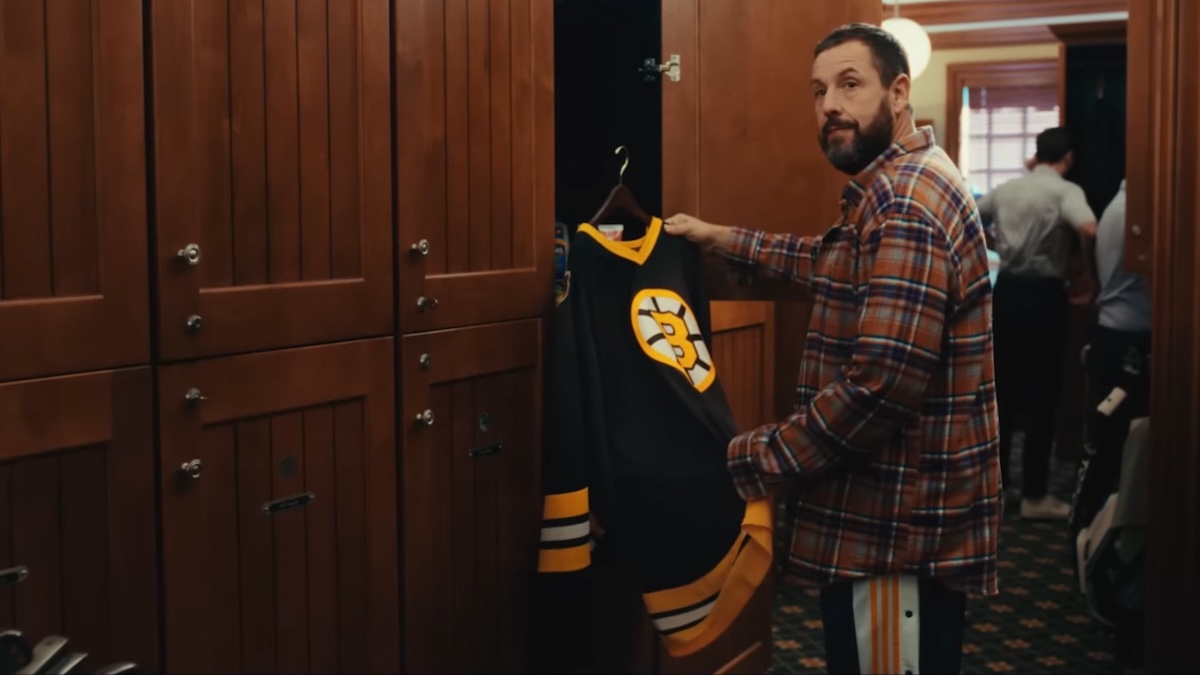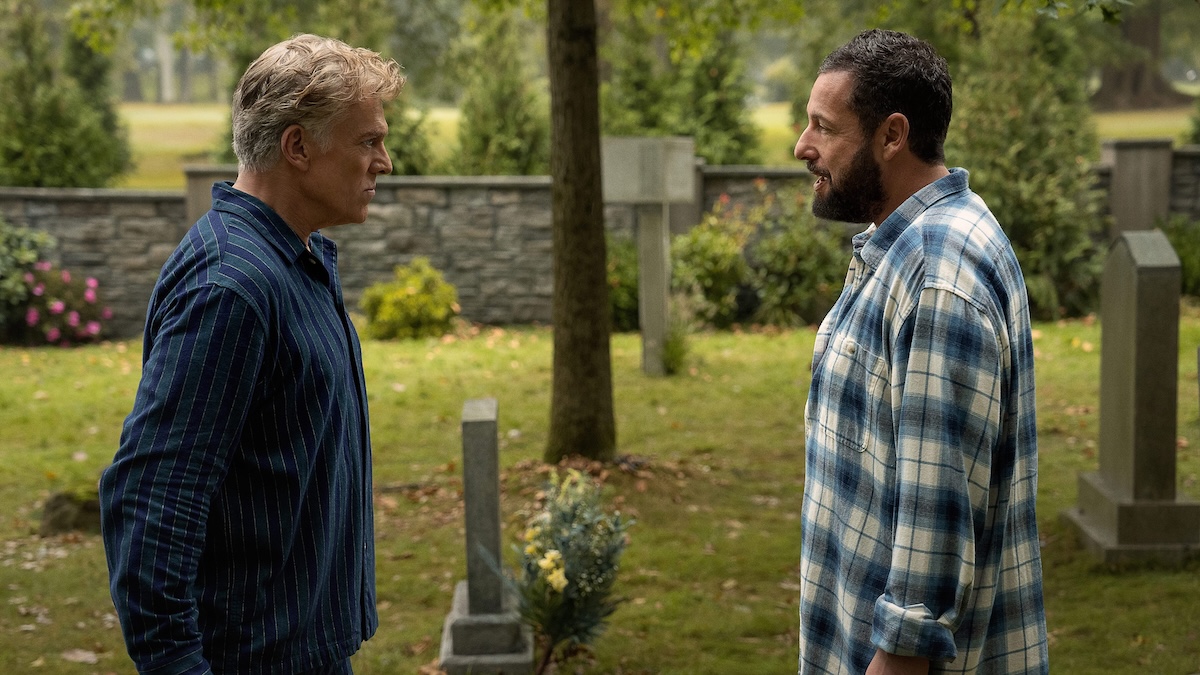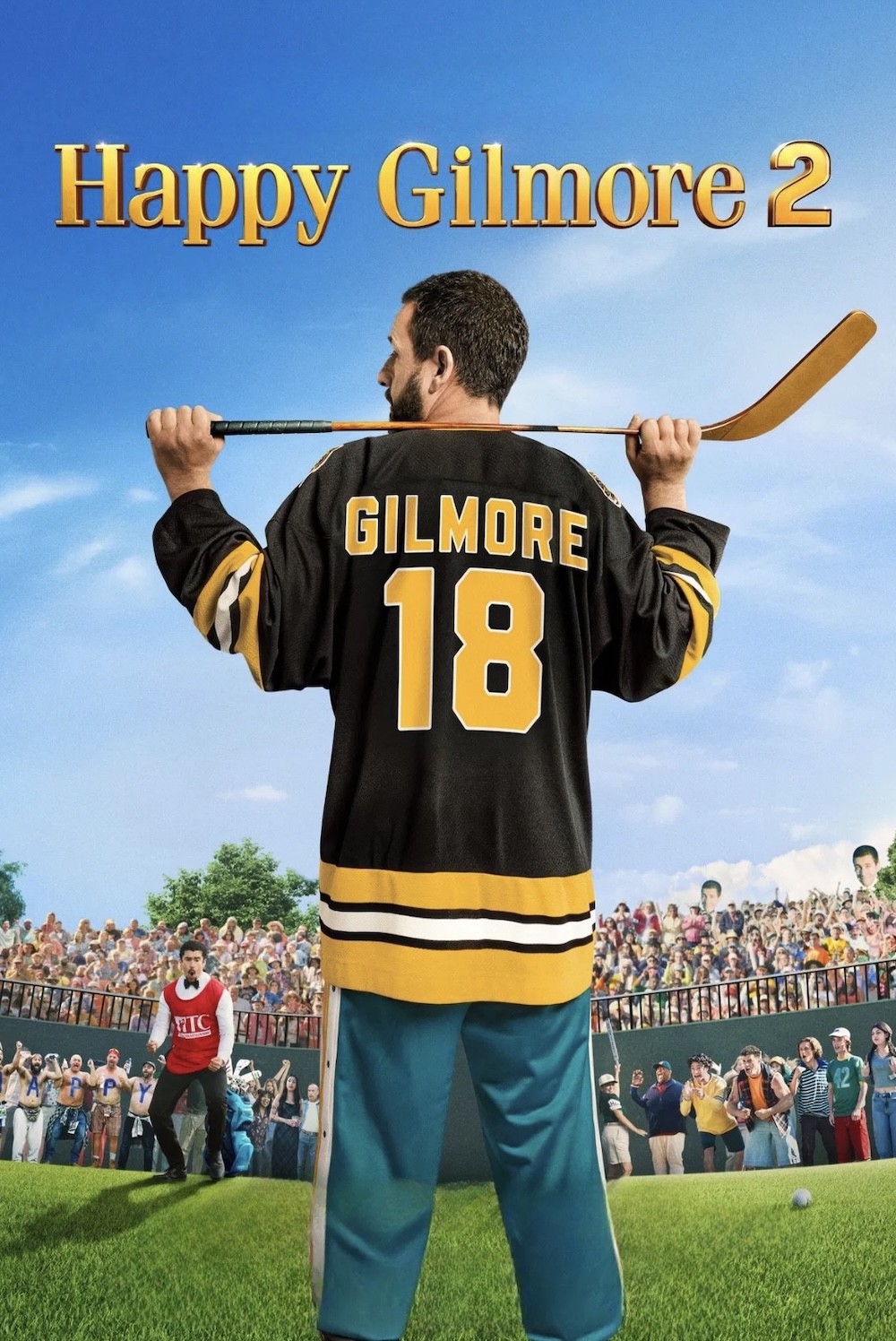HAPPY GILMORE 2 (2025)
Grieving a family tragedy, a retired Happy Gilmore returns to golf in order to fund his daughter's ballet lessons...

Grieving a family tragedy, a retired Happy Gilmore returns to golf in order to fund his daughter's ballet lessons...

I wanted to review Happy Gilmore 2 because I have a small place in my heart (a cramped motel room, say) for its predecessor, which I watched as a kid and have a fond memory of seeing with my dad, who was reduced to tears of laughter by it. Happy Gilmore (1996) was one of the early Adam Sandler films, in which he played weird, often violent, socially maladjusted characters intended to be relatable—though to whom, I don’t want to know.
Happy Gilmore also inspired one of my favourite openings to a Roger Ebert review: “Happy Gilmore tells the story of a violent sociopath. Since it’s about golf, that makes it a comedy.” Sandler in this era was kind of like an entertaining Pauly Shore. Yes, he made rubbish comedy movies, but with an energy and appeal that made it good enough to generate semi-nostalgic properties.
The original story found a hockey player (Sandler) becoming a golfer to win a championship and buy back his grandmother’s house. A violent man-child with a hair-trigger temper, in reality Happy would have domestic charges to his name and probably drink himself to death or die in a car incident, cursing his ex for taking the kids all the way. Since he was in a 1990s comedy aimed at man-children, he was, in the end, just a good boy who wanted to do well by his grandma.

The belated sequel sees our eponymous hero return to golf after accidentally killing his wife with a golf ball during a tournament, before entering a grief-stricken retirement for decades. But when his daughter needs ballet lessons in Paris that costs $300,000 (the plot is like a Mad Libs), he enters another golf competition. The film oddly seems to forget the details of its predecessor; in one scene, Gilmore apologises for losing his grandmother’s house “again,” when in the first film it was imperilled by taxes she owed. I may have missed something, to be fair, and it’s so beside the point to criticise the plot of a film like this that I should hang my head in shame.
Happy Gilmore 2‘s more of a nostalgia cash-grab than a movie. Clips from the ’96 comedy play throughout, partly because director Kyle Newacheck (What We Don in the Shadows) and co-writer Tim Herlihy (who also co-wrote the first film with Sandler) don’t trust the audience to grasp what’s happening without constant callbacks. It’s also just fan service, of course. I didn’t hate it, however. I laughed at a few of the jokes and wasn’t totally bored. But I’m unlikely to ever be moved by this type of aggressively lowbrow, dude-bro junk, where none of the characters can be anything other than class and gender stereotypes. (Happy’s sons are almost creepily interchangeable meatheads, while his daughter serves as a replacement mother, overseeing meals while dreaming of being a dancer). But given how this type can feel like nails on a chalkboard, Happy Gilmore 2 is a far from the bottom of the barrel.
I knew nothing going in and was genuinely sucker-punched by the unexpected death of Happy’s wife, which is so mean-spirited—after they take the time to characterise her for a few minutes before killing her in a freak accident (for which Happy is responsible!)–that it’s almost a satirical, self-aware gag, commenting on how arbitrary the plotting is in sequels like this.

I also enjoyed the return of certain supporting characters, like Ben Stiller’s abusive community servant. Thankfully, they tone him down a little here to a more conventional comic antagonist, as opposed to the sadistic elder abuser whose subplot in the original was just unpleasant. Here he’s closer to the character he played in Dodgeball: A True Underdog Story (2004).
Regarding Adam Sandler himself, I don’t understand his career choices as an actor and writer. If he only made rubbish and nothing else, I’d get it. But on every blue moon, he’ll headline a straight drama like Punch-Drunk Love (2002) or Uncut Gems (2019), where he’ll show himself to be a performer of great depth and sensitivity. And then he’ll make piles of lowest-common-denominator junk that’s not just bad but embarrassing and sleazy in how cynically it’s made so all the cast get fat paycheques. This is something people without talent are usually reduced to doing, after stumbled their way through a Hollywood career.
I get that the likely motivation for Sandler is money. He’s a shrewd businessman and knows how to get big pay-outs for himself and his friends while appearing in Netflix movies that look like 10th-rate TV shows. But if I found out I was, say, a gifted engineer, I wouldn’t make two great machines in as many decades and then spend the rest of my time turning out cheap mechanical birdcages. My ego simply wouldn’t let me do it. Especially at this point, as Sandler can still be rich and choose to make films that aren’t terrible.

Although he comes from the same comedy world as his cronies like Nick Swardson and Rob Schneider (both of whom have cameos here), he’s at a higher level of craft than either of those. His early work was certainly lowbrow, but movies like Billy Madison (1995) and the original Gilmore (which both formed the name of his production company Happy Madison) at least had an authentic sensibility that was somewhat unique to them. They weren’t Deuce Bigalow: Male Gigolo (1999) or its 2005 sequel European Gigolo (tagline: ‘Same Ho. New Lo’), The Animal (2001), The Hot Chick (2002), or, heaven forfend, Swardson’s Bucky Larson: Born to Be a Star (2011).
Yet here he’s still giving undeserved “work” (a day’s filming, maybe, as Swardson doesn’t even speak?) to those guys, at least one of whom (Schneider) is an anti-vaxxer who spreads dangerous misinformation and conspiracies online. Sandler’s going to be 60 years old next year. Doesn’t he want to leave a better legacy behind? I guess he also has Noah Baumbach’s The Meyerowitz Stories (2017) and 9/11 drama Reign Over Me (2007), also on his filmography.
The nadir of Sandler’s career in terms of shameless money-grubbing was Jack and Jill (2011), an ostensible comedy in which he played opposite-sex twins. It was a film that cost $79M to make and had the production value of a Saturday Night Live sketch; one especially egregious scene is supposed to be set at a basketball game, yet clearly was shot on a sound stage with four rows of bleachers. So where did all that money go? On cast fees, presumably. No wonder Sandler films are never short of cronyist cameos.

For me, though, his real nadir was the frankly disgusting That’s My Boy (2012), which starts with the “hilarious” premise that a child is raped by his teacher, who gets pregnant (the trailer shows the boy being punched in the face by his father and gets called a dumb ass… for being raped), and subsequently gives birth to a child whom the now-grown victim (Sandler) must reconnect with as an adult. This was the film that cemented for me that, capable of the occasional good performance as he is, Sandler is a shameless and amoral hack who just doesn’t care how good or bad his films are.
Still, I did indeed get a few mild yuks from Happy Gilmore 2. What can I say? I’m not sitting here drinking port and thinking about how I could be reading The Decameron instead. A lot of the jokes are moronic to a point where they’re more bemusing than anything, however. The type of humour that ends up in TV commercials for light beer, aimed at basic bros who get angry at rainbow cans, and who’ll leave comments under a YouTube video saying, “This is just how guys talk when we get together!”
There are cameos a-go-go from comedy and film folk elsewhere, and these are generally fine. There are also a half-dozen subplots that I didn’t bother getting into during my synopsis. Ultimately, Happy Gilmore 2 is recommended for Sandler fans and those just looking to veg out in front of undemanding content.
USA | 2025 | 118 MINUTES | 2.00:1 | COLOUR | ENGLISH


director: Kyle Newacheck.
writers: Tim Herlihy & Adam Sandler.
starring: Adam Sandler, Julie Bowen, Christopher McDonald, Benny Safdie, Bad Bunny & Ben Stiller.
